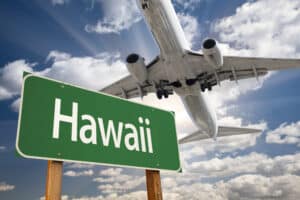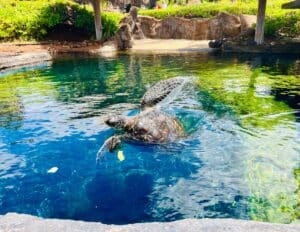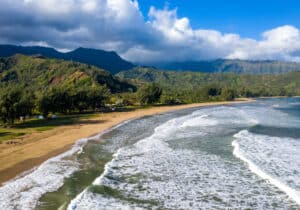When you think of Hawai‘i, a few images probably come to mind: golden beaches, hula dancers, and people wearing bright, floral shirts. Aloha Wear isn’t just clothing — it’s a symbol of island pride, cultural fusion, and the easy-going lifestyle that radiates the spirit of the islands.
From its grassroots beginnings in the 1920s to modern-day runways, aloha wear has evolved into a global symbol of island style. The bold prints and breezy fabrics instantly bring to mind sunny beaches, swaying palms, and the laid-back spirit of Hawai‘i. But the story behind Aloha Wear is more than just a fashion trend — it’s woven into the cultural fabric of the islands. Let’s explore its roots, its rise, and where you can shop for authentic Aloha Wear today.
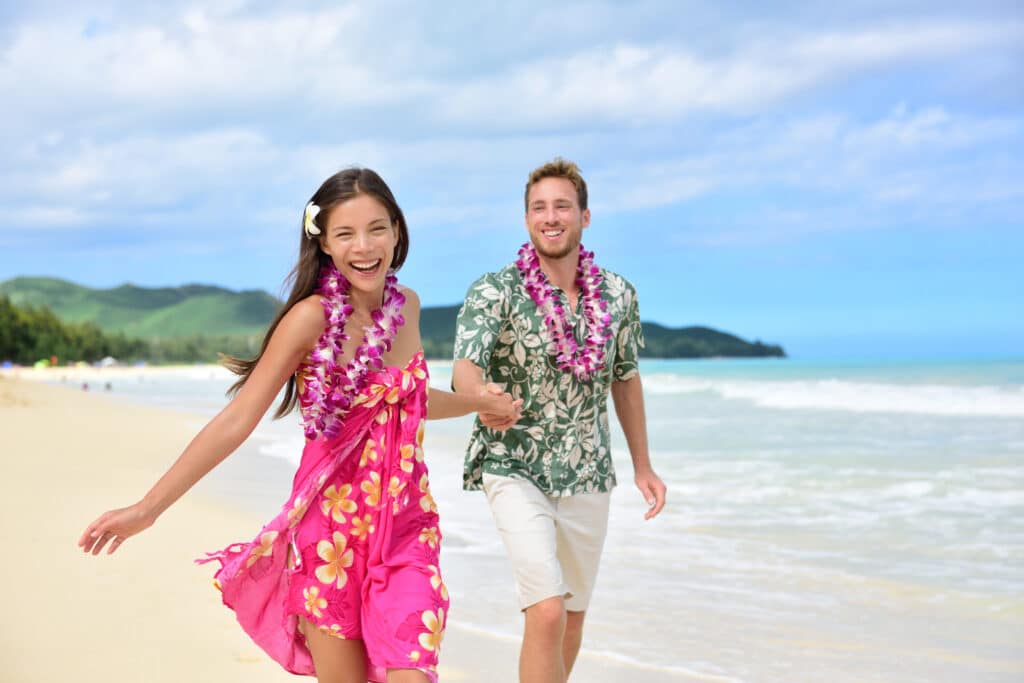
Couple Wearing Aloha Wear (Shutterstock)
The Birth of Aloha Wear: From Immigrants to Innovation
The origins of Aloha Wear stretch back to the early 20th century. In the 1920s and 1930s, Hawai‘i was a melting pot of cultures — Japanese, Chinese, Filipino, Portuguese, and native Hawaiian — each bringing their own textiles and sewing techniques. Japanese kimono fabrics in particular were vibrant and eye-catching.
Traditional Hawaiian textiles have a rich history and play a significant role in Hawaiian culture. The art of Hawaiian textile-making dates back to ancient times, with techniques passed down through generations. Known for their unique designs, they often feature floral patterns, geometric shapes, and other motifs inspired by nature. The use of natural fibers such as cotton, silk, and tapa cloth is characteristic of traditional Hawaiian textiles to be light and breezy for the climate.
World War II and Hollywood Spread the Trend
During World War II, thousands of American servicemen passed through Hawai‘i. They took aloha shirts home with them, introducing the look to the mainland. Postwar Hollywood also played a role in popularizing the style. Stars like Montgomery Clift, Frank Sinatra, and Elvis Presley wore Aloha Wear in movies set in the Islands, cementing its place in pop culture.
By the 1950s, Aloha Wear clothing had taken off in a big way. Historically, Aloha Wear was worn by esteemed individuals in Hawaiian society. The designs grew more complex, incorporating Hawaiian motifs like hula dancers, outrigger canoes, and native flora. This decade also saw the rise of companies like Kahala Sportswear (founded in 1936) and Reyn Spooner, which helped standardize the look and make it more widely available. Today, Aloha Wear is worn by anyone, symbolizing joy and the aloha spirit.
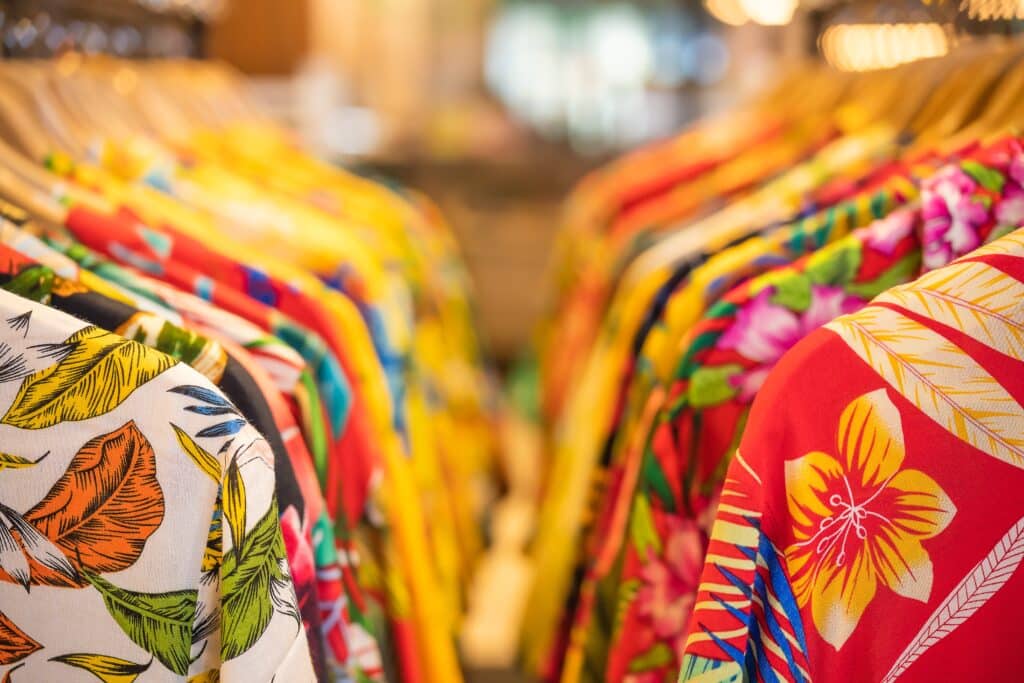
Aloha Wear (Shutterstock)
The Aloha Spirit in Fabric Form
Aloha Wear isn’t just about prints — it’s about embracing a lifestyle. In Hawaiian culture, “aloha” is a way of life that means love, compassion, and harmony. Wearing aloha gear became a way to embody that spirit, whether you were a local or a visitor.
One major shift came in the 1960s with the creation of “Aloha Fridays,” a workplace tradition that encouraged employees to wear Aloha shirts instead of formal business attire. Taking “casual Fridays” to the next level,” it helped welcome the weekend. According to the Hawaiian Fashion Guild, which promoted this trend, it was about comfort — but also about cultural pride.
Modern Aloha Wear: A Stylish Fusion of Old and New
Today, Aloha Wear has gone far beyond the classic button-down shirt. Designers offer everything from contemporary Hawaiian dresses and aloha shirts designed for women to jumpsuits and tailored jackets in island-inspired prints. While some brands stick to traditional patterns and silhouettes, others experiment with modern cuts and minimalistic designs.
Social media has also brought new life to Aloha Wear. Stylish locals and influencers regularly showcase how to blend classic pieces with streetwear or upscale fashion.
@IslandStyleFiles posted: “Wore my Sig Zane today and got compliments all over Kaka‘ako. Aloha wear isn’t just for tourists — it’s our heritage.”
Many local designers are also revisiting native Hawaiian stories, chants, and symbols in their collections. Labels like Sig Zane in Hilo infuse their designs with cultural meaning, drawing inspiration from Hawaiian genealogy, hula, and ʻāina (land). This brings a deeper layer to what might seem like a simple shirt.
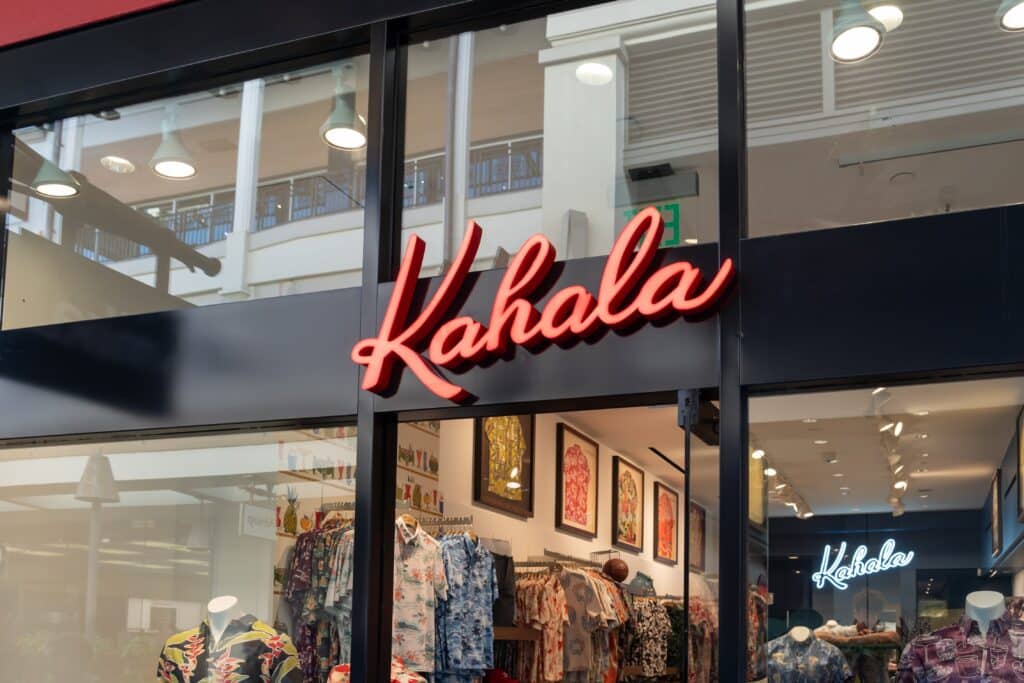
Kahala is Hawaii’s oldest operating clothing company (Shutterstock)
Where to Buy Authentic Aloha Shirts Today
Whether you’re looking for a modern spin or a timeless piece, Hawai‘i has no shortage of boutiques offering high-quality aloha wear. Here are some of the best places to shop:
- Kahala: One of the original aloha wear companies, Kahala still produces beautifully made shirts in classic and modern styles. Their prints often reference surf culture and vintage patterns.
- Reyn Spooner: Known for its reverse-print shirts (where the pattern is on the fabric’s inside for a faded look), Reyn Spooner is a favorite among locals and visitors. They’ve collaborated with major brands like Disney and the NFL for exclusive collections.
- Tori Richard: Based in Honolulu, this brand is famous for luxurious fabrics and high-end resort wear. Their women’s collection is especially popular, with dresses that easily transition from day to evening. These dresses are also ideal for weddings, showcasing how traditional Hawaiian textiles and designs can be integrated into more upscale events.
- Roberta Oaks: Located in Chinatown, Honolulu, Roberta Oaks blends mod fashion with island patterns. Her boutique is known for bold, tailored styles and unique takes on aloha prints.
- Sig Zane Designs: Rooted in Hilo, Sig Zane’s pieces honor Hawaiian storytelling and natural elements. His designs are deeply connected to hula and environmental stewardship.
- Manuheali‘i: Based in Kailua, this brand is known for its eye-popping colors and family-matching outfits that are perfect for special occasions.
@MaluhiaLiving shared: “Matching Manuheali‘i dresses for me and my daughter. Aloha Wear has never looked so good!”
Complete the Look: Hawaiian Fashion and Accessories to Love
Island style doesn’t have to stop at aloha shirts — keep an eye out for accessories that complete the look. Look for handcrafted lei po‘o (flower crowns) at local markets, which are often worn for special occasions or photo shoots. Pareo (also called sarongs) are another versatile favorite — used as beach cover-ups, dresses, or picnic blankets. For accessories, locally made ni‘ihau shell jewelry, kukui nut leis, and lauhala (woven leaf) hats and bags reflect a deep connection to Hawaiian traditions. These pieces don’t just make an outfit — they also carry the stories and craftsmanship of the islands.
Shopping Tips
- Shop for the occasion: Consider the event. Casual family outings call for cotton prints, while weddings or lūʻaus might call for a more formal fabric like silk or rayon.
- Fit matters: Traditional aloha shirts tend to be boxy. Modern brands like Roberta Oaks and Sig Zane offer more tailored fits.
- Support local: Look for locally owned businesses and designers who produce their garments in Hawai‘i to help sustain the community and culture.
- Explore online: Can’t make it to a boutique in person? Many local designers ship nationwide and offer full online collections.
@AlohaThreadsStyle raved: “Bought a Reyn Spooner shirt online last week — arrived fast and fits like a dream. Perfect for summer BBQs.”
Embrace the Aloha Spirit
If you’re planning a trip to the islands, Aloha Wear is more than a souvenir — it’s a way to bring the culture home with you. Whether you’re a first-time visitor looking for the perfect keepsake or a longtime local restocking your wardrobe, Aloha Wear offers a beautiful connection to the people, places, and stories of Hawai‘i. These clothes carry more than color — they carry mana, pride, and aloha.





